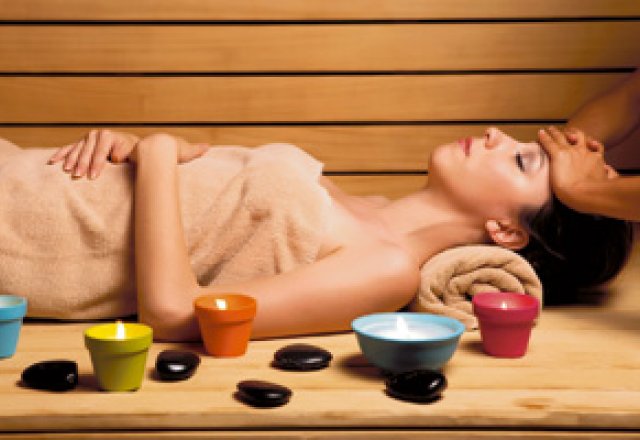
Why saunas are good for you

Cleanse your skin, increase circulation and ease muscle pain
Many years ago, the Finnish discovered that pouring water over heated rocks in a small enclosed room created a very hot, dry heat – the sauna.
Today use of the sauna has grown, with several versions used in health spas, resorts and the home. With their many health advantages, saunas have become a natural way of helping treat a range of major and minor medical conditions. If you’re curious or haven’t tried one yet, the benefits will soon convince you.
Why saunas are good for you
While it depends on the state of your health and age, saunas can cleanse your skin, increase circulation, open up your airways and sinuses, ease muscle and rheumatic pain, strengthen your immune system, improve joint movement and act as a great stress release for tension. Sweating opens up your pores, lets out toxins and impurities, increases circulation and is great for stimulating the vessels that aid in the healing process of infections. A sauna can also speed recovery time for injuries such as strains, sprains, arthritis and muscular pain. Another bonus includes being able to stimulate the endocrine glands that are important for regulating mood, tissue function, metabolism, sexual function and the reproductive process.
- One sauna session increases the amount of oxygen and nutrients delivered to your organs – especially the skin.
- Saunas make your body heat up the same way it would if you had a fever, helping your body to heal itself.
- They’re face-friendly! Saunas will relax face muscles, aid in a clearer complexion, and help remove dirt and oil.
- Evidence shows sweat created in a dry or steam sauna contains about 97 per cent water, while the sweat of far-infrared sauna users contains only 80 per cent water and 20 per cent toxins.
Staying hydrated
During any sauna session, you should drink lots of water, as sweating can often result in a large amount of water loss. Without replacement, this can cause fatigue or disruption of normal heart rhythms. Sessions should be no longer than 15 minutes and no more than three per day. Saunas are not recommended for pregnant women or very young children, as well as those with low blood pressure, diabetes or cardiac problems. If you’re taking medication, you should consult your doctor first and furthermore, you should never stay inside a sauna if you feel faint or nauseous.
Dry it out
The dry sauna involves the sequence of pouring water over heated rocks to create a high heat. This usually creates a humidity of about 20 per cent, enabling heat to be transferred to the body at a slower rate, rather than heating up too quickly. This enables you to be able to sit in the room longer. Inside, heat can reach up to 70 degrees Celsius (or more) where your body temperature is forced to produce more sweat to cool your body down. This aids in the removal of many toxic metals such as sodium, lead and cadmium. In one session, you can burn up to 300 calories – equivalent to a long jog or an hour of weight training!
Steamy business
Unlike dry saunas, the steam sauna (often known as wet sauna) holds a humidity of 100 per cent and reaches temperatures of around 35 to 50 degrees Celsius. Due to this, a steam sauna can ease congestion, inflammation, coughing, allergies and respiratory conditions – making them great for asthmatics.
“It relaxes the muscles and give moisture to the throat, therefore opening up your airways,” Melbourne therapist Reiko Furukawa, from In Touch Natural Therapies, says.
Reiko says the other good thing about steam saunas is they're great for use in conjunction with aromatherapy oils.
“The combination of essential oils such as clove, cinnamon or lavender have been clinically proven to benefit bronchial conditions just as effectively as antibiotics,” she` says. “I always use essential oils for relaxing, but they’re also a great antibacterial and antiseptic agent.”
Like the dry sauna, the steam sauna boosts circulation, speeds up the muscle recovery process and aids calorie burn. Reiko also says steam saunas act as an immune system booster by enhancing blood-flow, and increasing white blood cells in the body (great for chronic fatigue sufferers).
I see red
Infrared light forms part of the sun’s rays and is needed for all living things. This light is non-harmful and even used to treat newborn babies in hospital. It’s quickly absorbed into your body, creating a thermal energy that causes the heat sensation.
Infrared saunas operate differently to the dry or steam variety; instead of heating your skin to release water, they work by heating the body using lower temperatures. This healing process works right into the core of your body, producing a deep sweat.
Director Roseanne Fedrick from Sunlight Saunas Australia explains the human body can accumulate toxins like mercury, cholesterol, aluminum, nicotine and alcohol, and gases such as formaldehyde and sulfur. She says the build-up of these toxins and gases can disrupt the body's natural healing processes.
Luckily, saunas are one great way to help remove these toxins, through sweating. Roseanna says when toxins and gases are removed, our bodies have better blood flow, which is great news for a healthy complexion.
“In turn, better blood circulation means that more toxins flow to the skin’s surface, cleansing the pores,” she says.
Get more natural health advice and check out our beauty recipes. Don't forget to share your thoughts on Facebook!
Author: Simone Turner; photo credit: iStock


